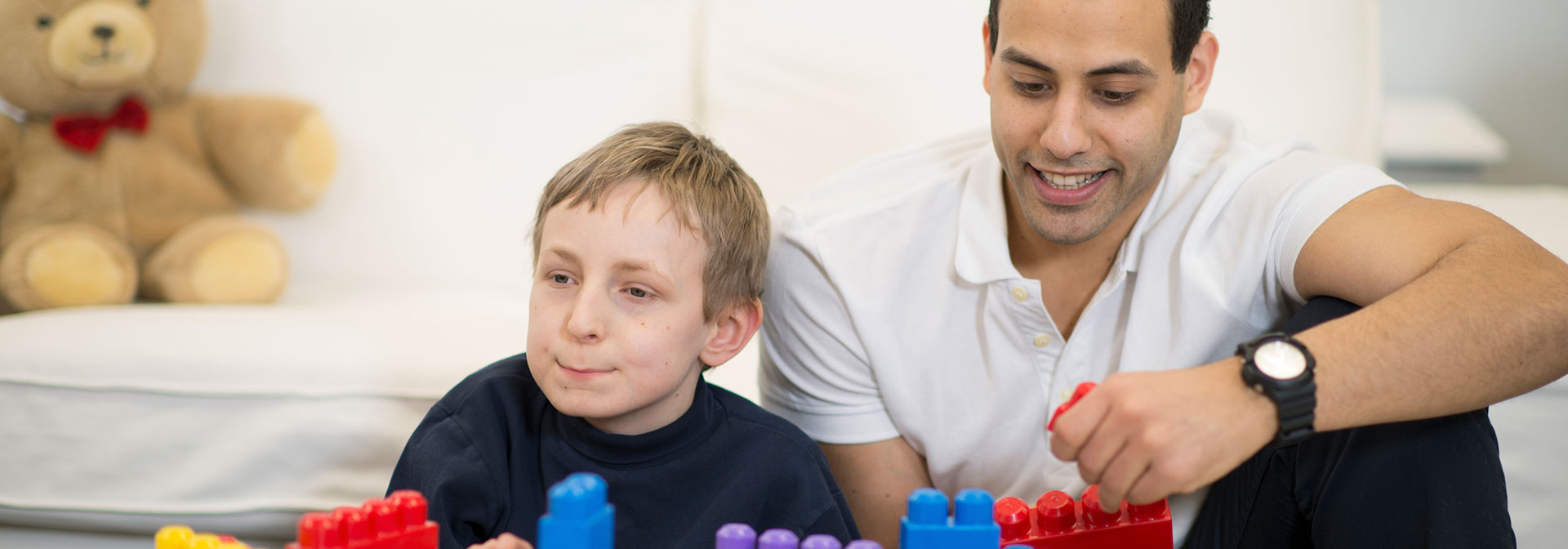
Resources | What is ABA?
What is Applied Behavior Analysis (ABA) training?
Many children with autism spectrum disorder (ASD) and related conditions exhibit unwanted behaviors, such as head-banging or slapping others. For parents and other caregivers, trying to reduce these behaviors can be difficult and frustrating. In fact, efforts at discouragement often end up making the behaviors more frequent.
One approach for dealing with these issues is applied behavior analysis, or ABA, training. One of the most widely accepted autism therapies, 32 out of the 50 states in the U.S. have laws that require health insurers to cover it.
ABA is based on the idea that people are more likely to repeat behaviors that are rewarded than behaviors that are not recognized or are ignored. Since the 1960s, researchers have recognized that ABA can help children with autism. ABA does this by helping them develop a number of skill sets while reducing the likelihood of their engaging in problematic behaviors. The technique is endorsed as a treatment for ASD by the American Medical Association, American Academy of Pediatrics, and the U.S. Surgeon General.
How does Applied Behavior Analysis work?
ABA training is usually conducted by a trained therapist. In traditional ABA, the therapist spends 20 to 40 hours per week working one-on-one with a child. Often, though, a therapist will use a version of the therapy known as “modified ABA.” With modified ABA, the therapist spends 10-15 hours per week with the child to allow the child time for other therapies such as speech and occupational therapy. This also allows the child to spend time in a therapeutic social environment. All children with autism are unique and have specific learning needs. Consequently, the therapist will develop an applied behavior analysis program that’s tailored to meet those needs.
The treatment begins with an assessment by the therapist. The purpose of the assessment is to determine which skills the child already possesses and where the child has deficits. The therapist next develops an ABA program aimed at increasing the child’s skills in many areas. The program will likely include goals related to the child’s:
- Academic development
- Communication skills
- Social skills and overall interaction with the environment
After identifying the goals, the therapist creates a series of steps to help the child reach them. The ABA therapist can employ a number of different procedures to teach the child with autism a given skill.
One commonly used procedure is discrete trial training. The therapist presents the child with a cue. The child then has the opportunity to respond. If the child responds appropriately, the behavior is rewarded. The specific reward is something the child enjoys, so that he or she is motivated to repeat the desired behavior in the future.
Admittedly, the world is not as simple as discrete trial training might make it seem. So, applied behavior analysis programs include a number of other training procedures. These are used to teach the child to generalize the skills being learned to several different settings. Procedures might include incidental teaching of skills throughout the day and task analysis. With these procedures, children with autism learn to perform multiple steps to accomplish specific tasks.
